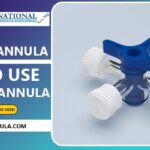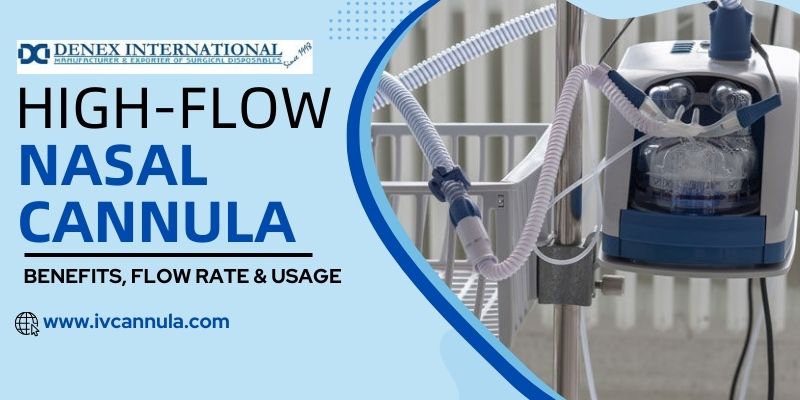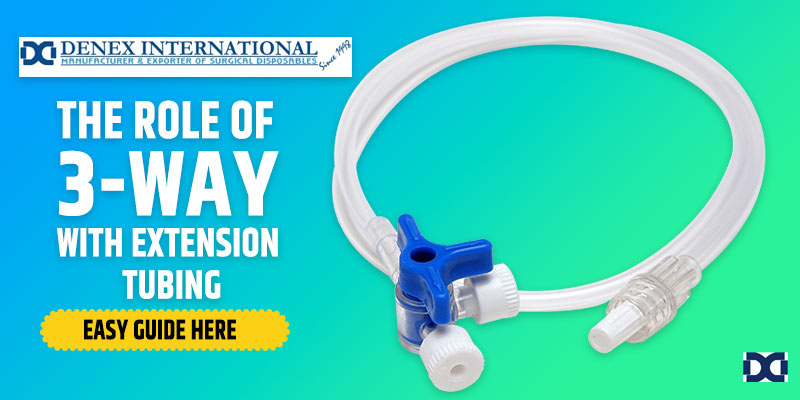Welcome to Denex International’s authoritative guide on Pediatric IV Cannulation, a crucial procedure in the healthcare industry. As a leading IV Cannula Manufacturer in India, we understand the significance of this technique in pediatric patients. In this blog post, we’ll delve into the nuances of pediatric IV cannulation, covering everything from the procedure itself to the selection of the right pediatric cannula size.
Understanding Pediatric IV Cannulation
Pediatric IV cannulation refers to inserting a thin, flexible tube (cannula) into a child’s vein to administer fluids, medications, or blood products directly into the bloodstream. This technique is commonly employed when oral medications or other forms of treatment are not practical or effective. Due to children’s unique anatomical and physiological characteristics, pediatric IV cannulation requires a delicate and skilled approach.
Healthcare professionals, often pediatric nurses or specialized paediatricians, use their expertise to select an appropriate vein and ensure a secure and painless insertion for the young patient. This procedure is crucial in various medical settings, such as hospitals, clinics, or emergencies, where prompt and accurate delivery of treatments is vital for a child’s well-being.
Importance of Pediatric Cannula Size
The size of a pediatric IV cannula is determined based on the child’s age, weight, and medical condition, as well as the type of treatment or fluids being administered. Commonly used sizes for pediatric IV cannulas are designated by gauge (G) and typically range from 24G (the smallest) to 14G (more significant).
- 24G to 22G: These are small cannulas suitable for infants or children. They are often used for administering medications or fluids that do not require a high flow rate.
- 20G to 18G: Medium-sized cannulas appropriate for older infants and toddlers. They allow for a slightly higher flow rate and are commonly used in pediatric medical settings.
- 16G to 14G: Larger-sized cannulas are usually reserved for specific situations requiring a higher flow rate, such as rapid fluid resuscitation or blood transfusions in older children.
The importance of selecting the appropriate pediatric cannula size cannot be overstated in pediatric care. Pediatric cannulas, thin, flexible tubes inserted into a child’s vein for administering fluids or medications, come in various sizes to accommodate the young patient’s age, weight, and vein calibre. Choosing the right size is crucial to ensure proper fluid flow and prevent complications such as infiltration or discomfort.
Too large a cannula may lead to increased pain and potential damage to delicate veins, while a size too small may impede the required flow rate, affecting treatment efficiency. Careful consideration of the pediatric patient’s unique physiological characteristics and specific medical requirements is imperative for healthcare professionals to make informed decisions about cannula size, optimizing care delivery and promoting the child’s well-being.
Read Also: IV Cannula Size, Color, Types & Uses
Pediatric IV Cannulation Procedure
The pediatric IV cannulation procedure involves carefully inserting a thin, flexible tube (cannula) into a child’s vein to administer fluids, medications, or other treatments directly into the bloodstream. Below is a general step-by-step guide for the pediatric IV cannulation procedure:
- Patient Assessment:
-
- Review the child’s medical history and current condition.
- Assess the child’s age, weight, and any existing medical conditions that may impact the procedure.
- Evaluate the child’s veins to determine the most suitable site for cannulation.
- Gather Equipment:
-
- Assemble the equipment, including the appropriate-sized cannula, sterile dressings, antiseptic solution, adhesive tape, tourniquet, and any required fluids or medications.
- Prepare the Child:
-
- Explain the procedure to the child (depending on age) and their caregivers, ensuring they understand what to expect.
- Obtain consent from the child’s parent or guardian.
- Position the Child:
-
- Position the child comfortably, with the chosen arm or hand exposed for the procedure.
- Consider using distraction techniques or comfort measures to alleviate anxiety.
- Tourniquet Application:
-
- Apply a tourniquet proximal to the intended cannulation site to enhance vein visibility.
- Avoid excessive tightness to prevent discomfort or compromise blood flow.
- Vein Selection:
-
- Choose a suitable vein, often in the hand, forearm, or scalp, based on the child’s age and the purpose of the IV therapy.
- Consider using a transillumination device for better vein visualization if available.
- Skin Preparation:
-
- Clean the selected site with an antiseptic solution to reduce the risk of infection.
- Anesthesia (Optional):
-
- If necessary, apply a topical anaesthetic to minimize pain during cannulation.
- Cannula Insertion:
-
- Hold the skin taut near the insertion site.
- Insert the cannula at a slight angle into the vein with a smooth, controlled motion.
- Observe for blood return in the flashback chamber of the cannula to confirm successful placement within the vein.
- Secure the Cannula:
-
- Once the cannula is in place, secure it with an appropriate dressing or adhesive tape to prevent accidental dislodgment.
- Connect IV Tubing:
-
- Connect the cannula to the IV tubing and the prescribed fluids or medications.
- Monitor and Document:
-
- Regularly monitor the IV site for signs of complications such as infiltration, phlebitis, or infection.
- Document the procedure details, including the site, cannula size, and relevant observations.
- Patient Education:
-
- Provide post-procedure care instructions to the child and caregivers, emphasizing signs of complications and when to seek medical attention.
Throughout the process, healthcare professionals must communicate effectively, maintain a calm and reassuring demeanour, and prioritize the well-being and comfort of the pediatric patient.
Benefits of Pediatric IV Cannulation
Pediatric IV cannulation, the process of inserting a thin tube into a child’s vein, offers several benefits in the field of pediatric healthcare:
- Efficient Medication Administration: IV cannulation allows for the direct and efficient administration of medications, fluids, or other therapeutic agents into a child’s bloodstream. This is particularly crucial when immediate and precise delivery of treatment is required.
- Rapid Response to Emergencies: In emergencies, such as dehydration or severe infections, IV cannulation provides a quick and effective way to deliver fluids and medications, helping stabilize the child’s condition promptly.
- Accurate Dosage Control: IV administration allows for precise control over the dosage of medications, ensuring that the prescribed amount reaches the circulatory system directly. This is especially important in pediatric cases where accurate dosing is critical.
- Continuous Access for Treatment: Once the cannula is in place, it provides healthcare professionals with constant access to the child’s bloodstream. This eliminates the need for repeated needle sticks, reducing the discomfort and anxiety for both the child and caregivers.
- Hydration and Nutritional Support: IV cannulation facilitates the administration of fluids and nutritional support directly into the bloodstream, addressing issues such as dehydration or the need for specialized nutrition in pediatric patients.
- Monitoring Capabilities: The placement of an IV line allows healthcare providers to monitor vital signs and blood parameters more effectively. It enables timely adjustments to treatment plans based on the child’s response to therapy.
- Pain Management: For children undergoing surgery or other painful procedures, IV cannulation allows for administering pain medications directly into the bloodstream, ensuring rapid relief and better pain control.
- Flexible Treatment Options: Pediatric IV cannulation accommodates a wide range of treatments, including antibiotics, blood transfusions, chemotherapy, and other specialized therapies, making it a versatile method for addressing various medical conditions.
- Reduced Oral Medication Challenges: In cases where a child may have difficulty swallowing or absorbing oral medications, IV administration ensures that the drug reaches the circulatory system directly, bypassing potential absorption issues.
While the benefits of pediatric IV cannulation are significant, healthcare professionals need to approach the procedure with care, considering the unique anatomical and physiological aspects of pediatric patients to minimize discomfort and ensure successful outcomes.
Complications of Pediatric IV Cannulation
While pediatric IV cannulation is a standard and often necessary medical procedure, it comes with potential complications, and healthcare professionals need to be vigilant to minimize risks. Some complications include:
- Pain and Discomfort: The cannula insertion may cause pain and discomfort for the child, especially during needle insertion or if the cannula is not properly secured.
- Infiltration occurs when the infused fluid or medication leaks into the surrounding tissues instead of entering the vein. Infiltration can lead to swelling, pain, and potential damage to the surrounding area.
- Phlebitis: Inflammation of the vein (phlebitis) may occur, causing redness, tenderness, and swelling along the vein. This can result from irritation from the cannula or the administered substances.
- Infection: There is a disease risk at the insertion site, especially if proper aseptic techniques are not followed. Conditions can lead to localized redness, warmth, and, in severe cases, systemic symptoms.
- Thrombosis: The formation of blood clots within the vein (thrombosis) is a rare but severe complication. It can prevent blood flow and lead to more severe health issues if promptly addressed.
- Catheter Dislodgment: The cannula may become dislodged or accidentally removed, requiring reinsertion. This can result in treatment interruption and potential difficulties in securing a new insertion site.
- Allergic Reactions: Some children may react to the materials used in the cannula or medications administered. This can manifest as itching, rash, or more severe allergic responses.
- Fluid Overload or Imbalance: Improper monitoring or administration of fluids can lead to fluid overload or imbalance, impacting the child’s electrolyte levels and potentially causing complications.
- Nerve Injury: In rare cases, nerve injury may occur during the insertion process, leading to temporary or, in extreme cases, permanent neurological issues.
- Psychological Impact: Pediatric patients may experience anxiety, fear, or psychological distress related to the procedure, especially if they perceive it as painful or invasive.
To mitigate these complications, healthcare professionals must adhere to established protocols, use proper aseptic techniques, choose appropriate vein sites, and continuously monitor the child’s response to the IV cannulation. Regular assessments and prompt intervention can minimize the impact of potential complications and ensure the safety and well-being of pediatric patients undergoing IV cannulation.
Read Also: Cannula Woes: Navigating the Complications of IV Cannula
Conclusion:
In conclusion, mastering pediatric IV cannulation is essential for healthcare professionals dealing with children. Denex International, as a trusted IV Cannula Manufacturer in India, advocates for using proper techniques and size-appropriate cannulas to enhance the overall experience for pediatric patients. By following our comprehensive guide, healthcare practitioners can confidently navigate the intricacies of pediatric IV cannulation, ensuring optimal care and positive outcomes for their young patients. For more information on high-quality IV cannulas, contact Denex International, your reliable partner in pediatric healthcare.







